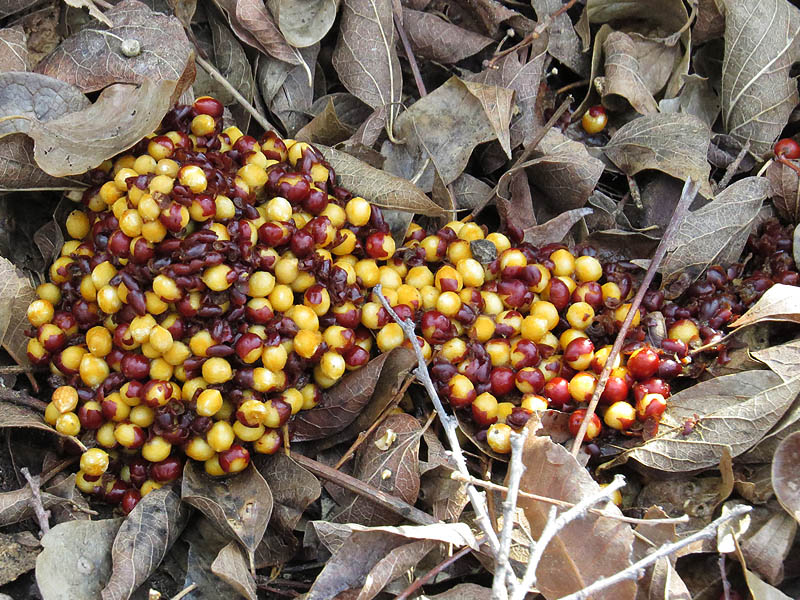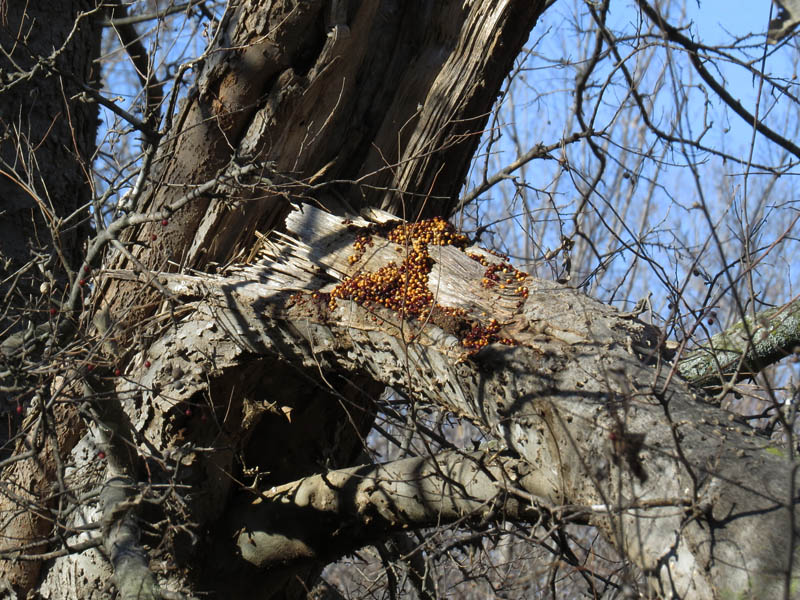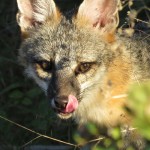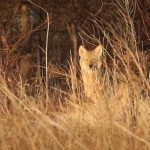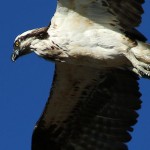Dateline – December 27, 2013
I took a walk through the Lake Lewisville Environmental Learning Area in late December on a bright sunny morning. The weather was brisk but bearable, and the local wildlife was out and active. Even some grasshoppers were still kicking at this late date.
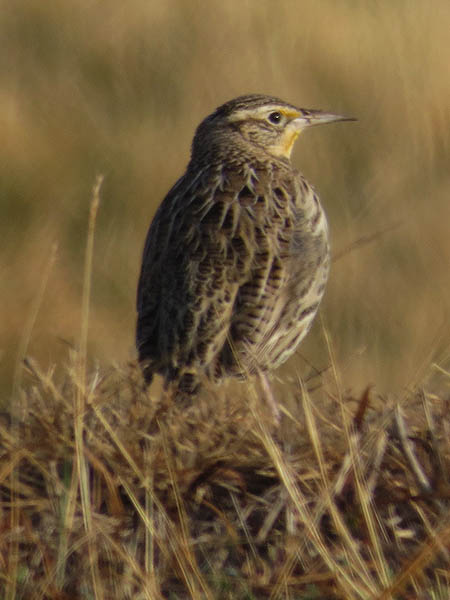
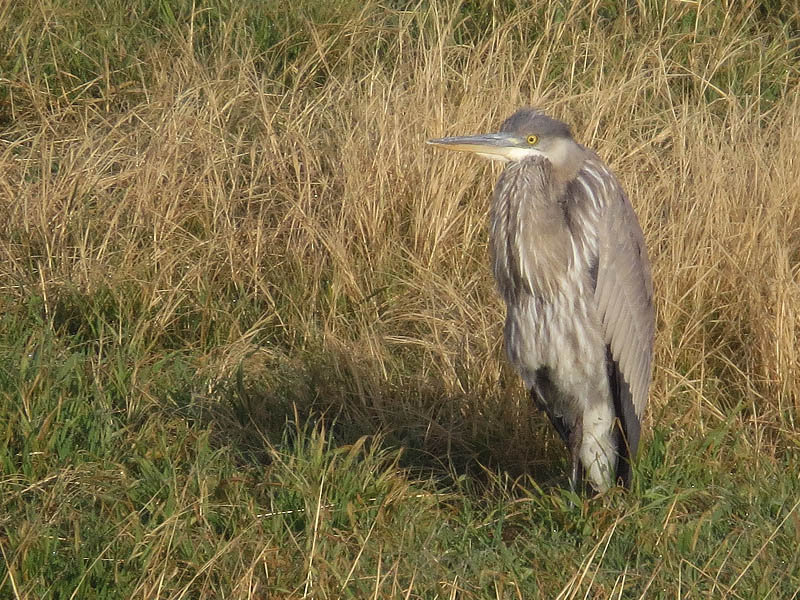


As I worked my way along the trail system at LLELA and soon found myself surrounded by an amazing array of wintertime songbirds and sparrows. Ripening berries were the attractant for most of these birds.
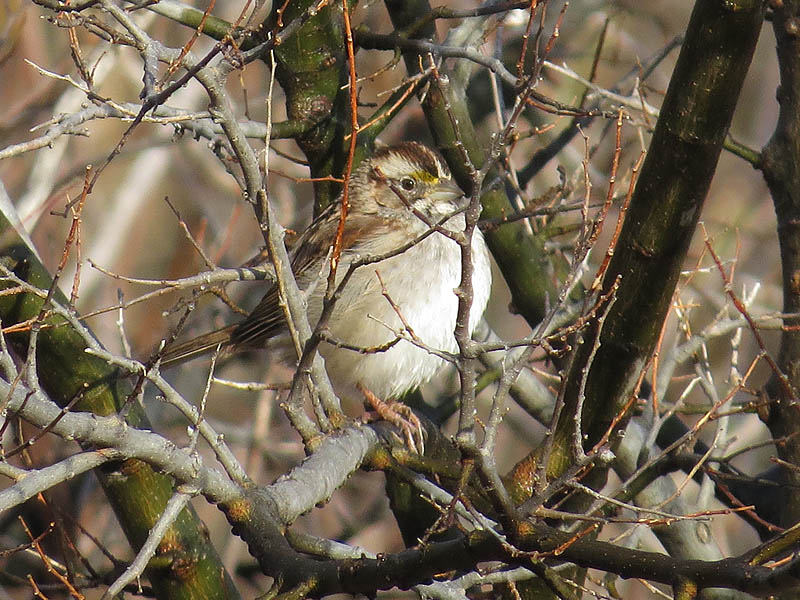


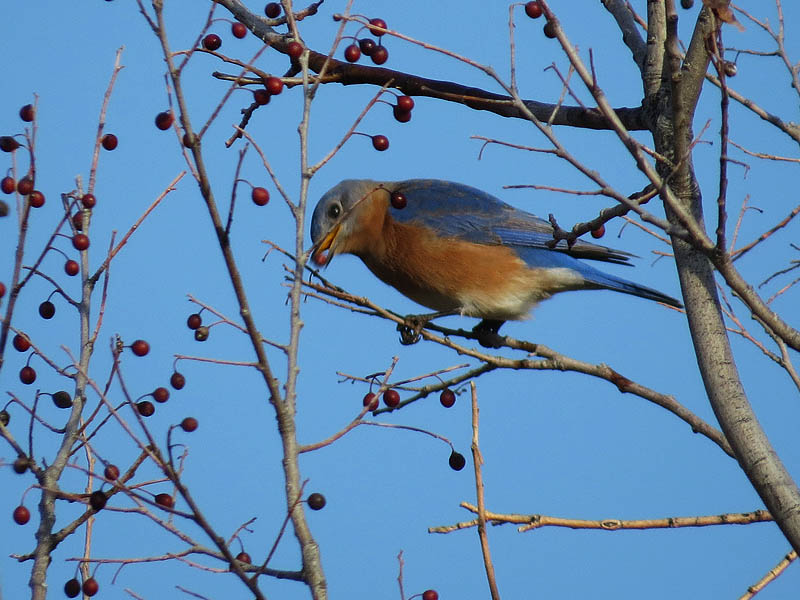


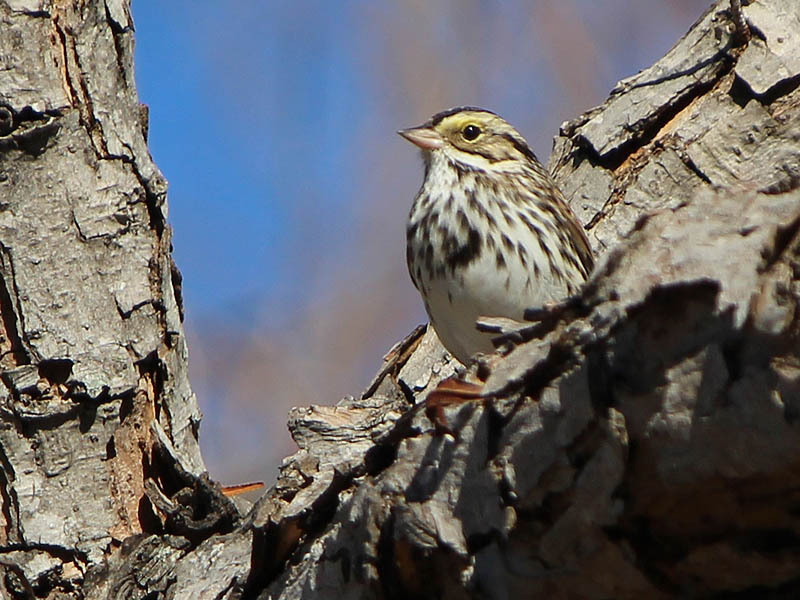
At one point I found myself deep in a Juniper grove surrounded by berry-laden evergreens. Wave after wave of hungry birds, feasted, and then moved on. First American Robins flew in. They were followed by handsome Cedar Waxwings. It was quite an experience.
American Robins were also out in force on this day. These birds are always a joy to observe. Wikipedia has this to say about these charming birds:
The American Robin (Turdus migratorius), also known as the robin, is a migratory songbird of the thrush family. It is named after the European Robin because of its reddish-orange breast, though the two species are not closely related, with the European robin belonging to the flycatcher family. The American Robin is widely distributed throughout North America, wintering from southern Canada to central Mexico and along the Pacific Coast. It is the state bird of Connecticut, Michigan, and Wisconsin.[3] According to some sources, the American Robin ranks behind only the Red-winged Blackbird (and just ahead of the introduced European Starling) as the most abundant, extant land bird in North America. It has seven subspecies, but only T. m. confinis of Baja California Sur is particularly distinctive, with pale gray-brown underparts.
The American Robin is active mostly during the day and assembles in large flocks at night. Its diet consists of invertebrates (such as beetle grubs, earthworms, and caterpillars), fruits and berries. It is one of the earliest bird species to lay eggs, beginning to breed shortly after returning to its summer range from its winter range. Its nest consists of long coarse grass, twigs, paper, and feathers, and is smeared with mud and often cushioned with grass or other soft materials. It is among the first birds to sing at dawn, and its song consists of several discrete units that are repeated.
The adult robin is preyed upon by hawks, cats and larger snakes, but when feeding in flocks, it can be vigilant and watch other birds for reactions to predators. Brown-headed Cowbirds lay eggs in robin nests, but robins usually reject the cowbird eggs.
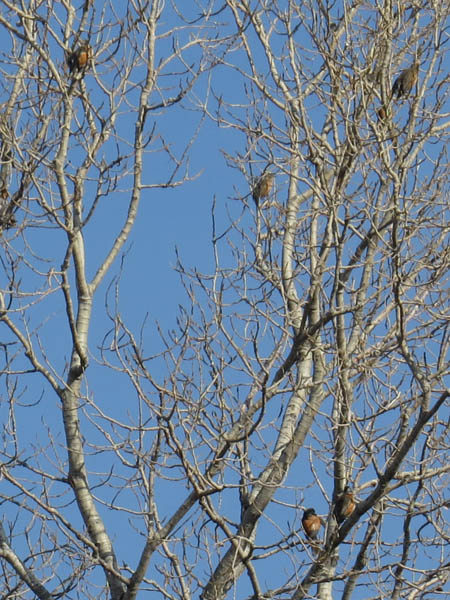

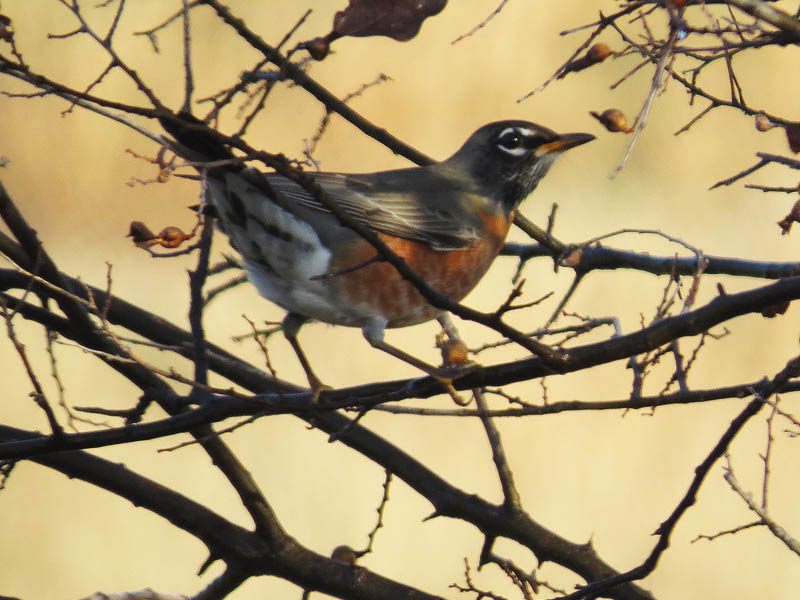
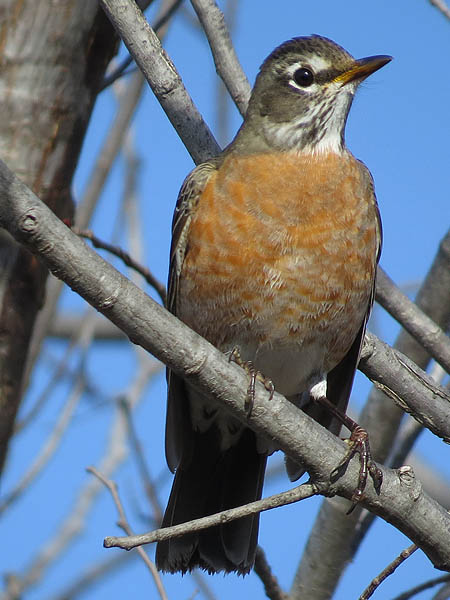

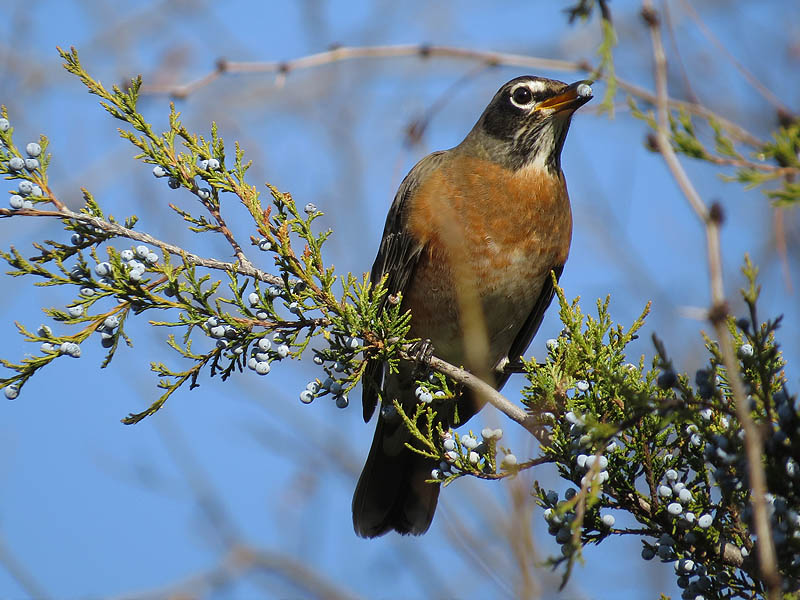
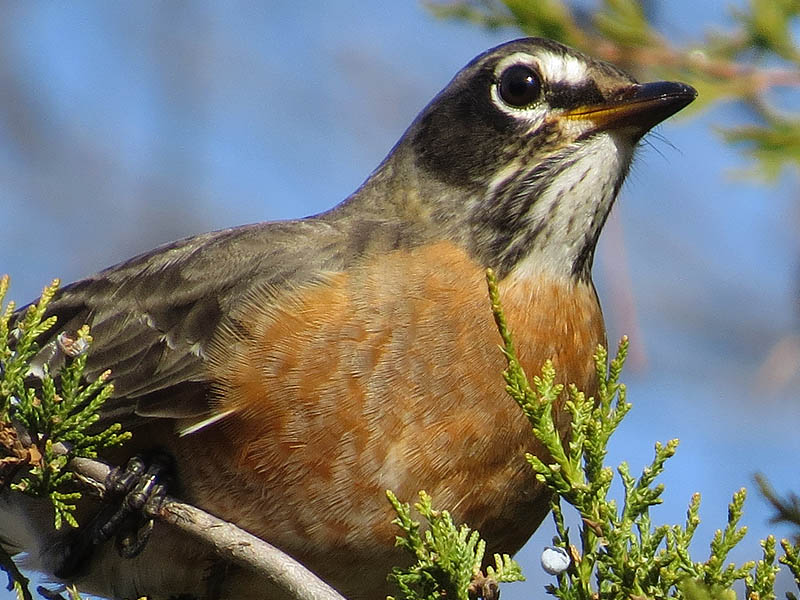


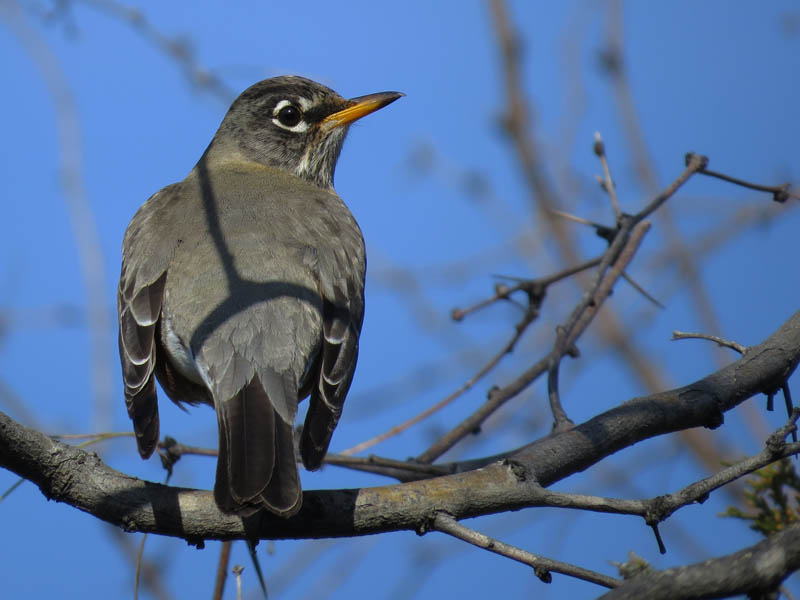
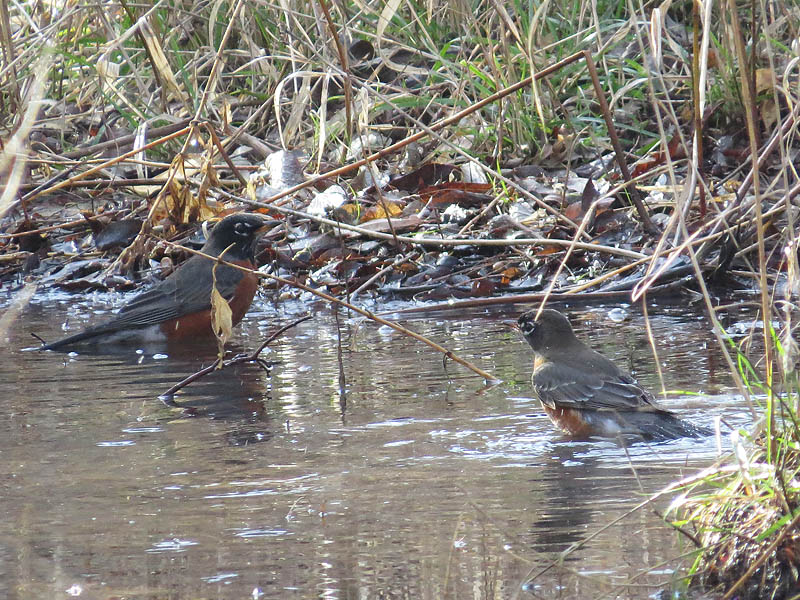

Cedar Waxwings are some of my favorite birds. Though they are strikingly exotic looking up close, like so many birds the coloration of the Cedar Waxwing mutes with distance and they become easy for the casual observer to overlook.
Wikipedia describes Cedar Waxwings in this way:
The Cedar Waxwing (Bombycilla cedrorum) is a member of the family Bombycillidae or waxwing family of passerine birds. It is a medium sized, mostly brown, gray, and yellow bird named for its wax-like wing tips. It is a native of North and Central America, breeding in open wooded areas in southern Canada and wintering in the southern half of the United States, Central America, and the far northwest of South America. Its diet includes cedar cones, fruit, and insects.
Cedar Waxwings are a medium sized bird approximately 6–7 in (15–18 cm) long and weigh roughly 30 g (1.1 oz). They are smaller and more brown than their close relative, the Bohemian Waxwing (which breeds farther to the north and west). It is a “silky, shiny collection of brown, gray, and lemon-yellow, accented with a subdued crest, rakish black mask, and brilliant-red wax droplets on the wing feathers.” These birds’ most prominent feature is this small cluster of red wax-like droplets on tips of secondary flight feathers on the wings, a feature they share with the Bohemian Waxwing (but not the Japanese Waxwing). The wings are “broad and pointed, like a starling’s.” The tail is typically yellow or orange depending on diet. Birds that have fed on berries of introduced Eurasian honeysuckles while growing tail feathers will have darker orange-tipped tail-feathers. The tail is somewhat short, and square-tipped. Adults have a pale yellow belly. The Waxwing’s crest often “lies flat and droops over the back of the head.” It has a short and wide bill. The Waxwing’s black mask has a thin white border. Immature birds are streaked on the throat and flanks, and often do not have the black mask of the adults. Males and females look alike.
Preferred habitat consists of trees at the edge of wooded areas, or “open” forests, especially those that provide access to berry sources as well as water. They are frequently seen in fruiting trees. Waxwings are attracted to the sound of running water, and love to bathe in and drink from shallow creeks. In urban or suburban environments, waxwings often favor parkland with well-spaced trees; golf courses, cemeteries, or other landscaping with well-spaced trees; bushes that provide berries; and a nearby water source such as a fountain or birdbath. Also look for them near farms, orchards, and gardens, particularly ones with fruiting trees or shrubs.
Outside the breeding season, Cedar Waxwings often feed in large flocks numbering hundreds of birds. This species is nomadic and irruptive, with erratic winter movements, though most of the population migrates farther south into the United States and beyond, sometimes reaching as far as northern South America. They will move in huge numbers if berry supplies are low. Rare vagrants have reached western Europe, and there are two recorded occurrences of Cedar Waxwing sightings in Great Britain. Individual Bohemian Waxwings will occasionally join large winter flocks of Cedar Waxwings.
In winter, these birds can be very confident and will come into gardens for berry bushes and trees and to drink from fountains or bird baths.
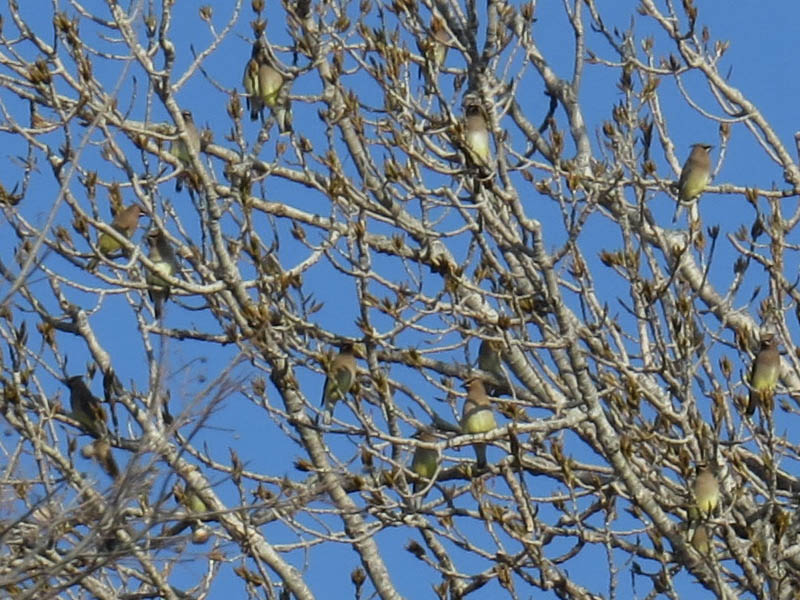

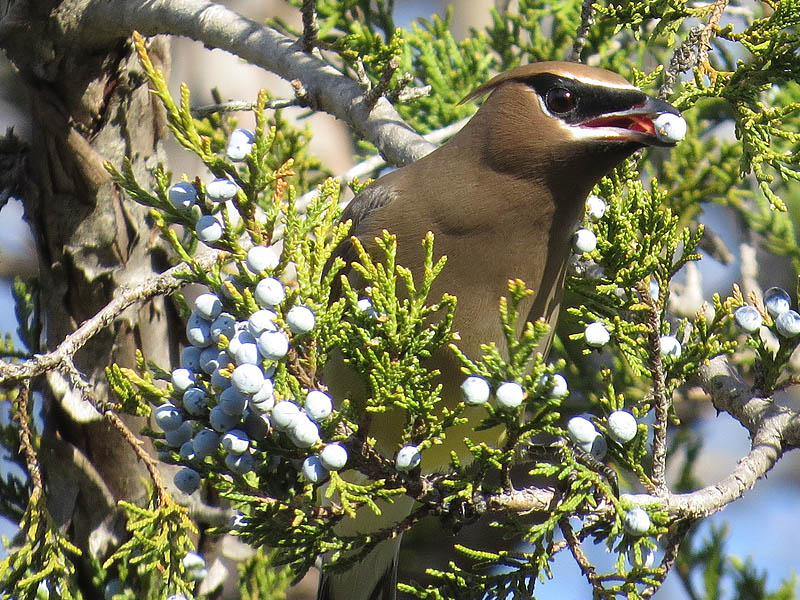
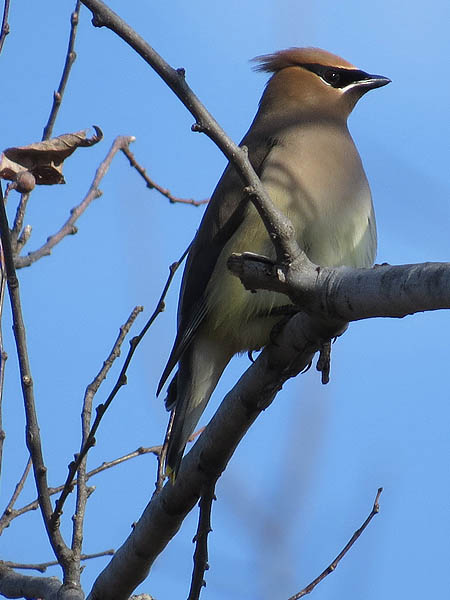


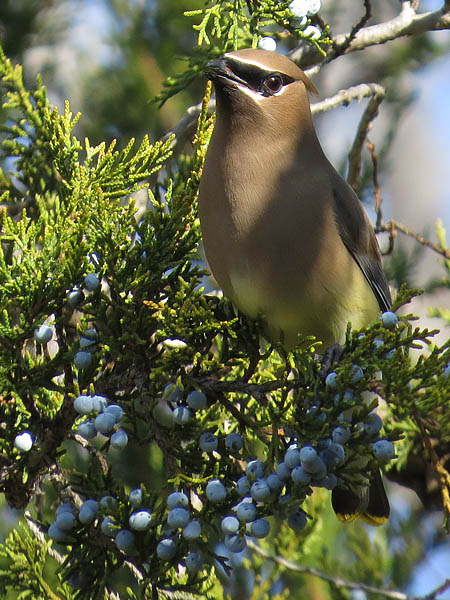
There were signs of mammalian berry eating as well. Piles of partially digested Hackberry seed were a common fixture under trees and on branches. Raccoons and Opossums gorge on these berries in early winter. The ripe fruit of the Hackberry tree has a thing sweet skin surrounding a 1/4 inch seed. The seed is rock hard and cannot be chewed, so the fruit is mostly swallowed whole by Raccoons and Opossums who partake. The result of this indulgence are piles of dropping like the ones in the pictures below.
